
Posts Tagged: phacelia
A Bumble Bee Ballet
Ever watched a bumble bee ballet? Bumble bees may look clumsy in flight, but they get the job...
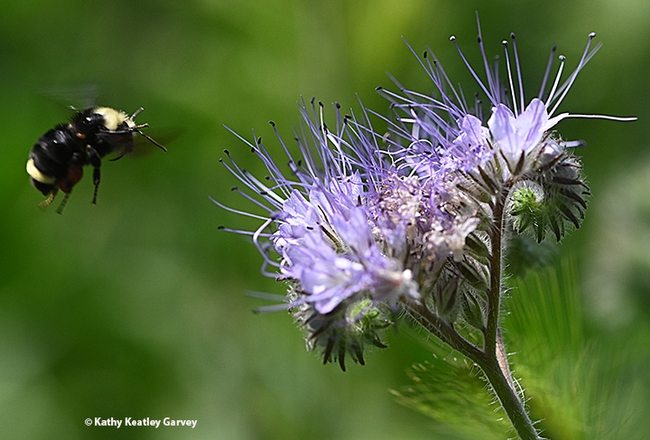
A yellow-faced bumble bees, Bombus vosnesenskii, heads for Phacelia. (Photo by Kathy Keatley Garvey)
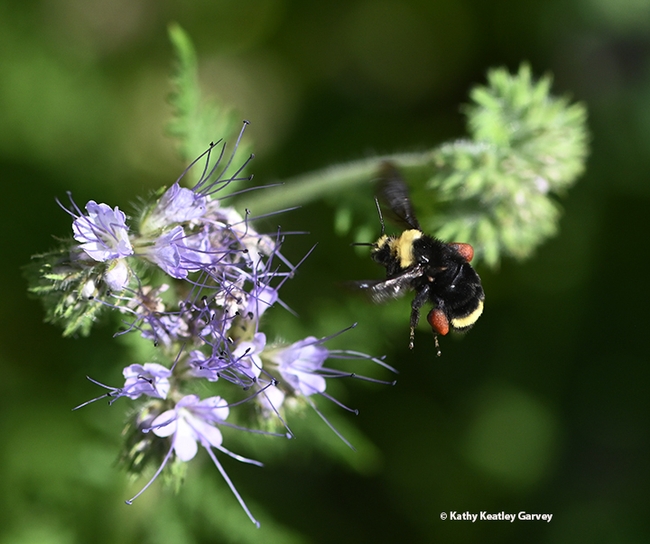
Packing red pollen, this yellow-faced bumble bee targets another Phacelia blossom. (Photo by Kathy Keatley Garvey)
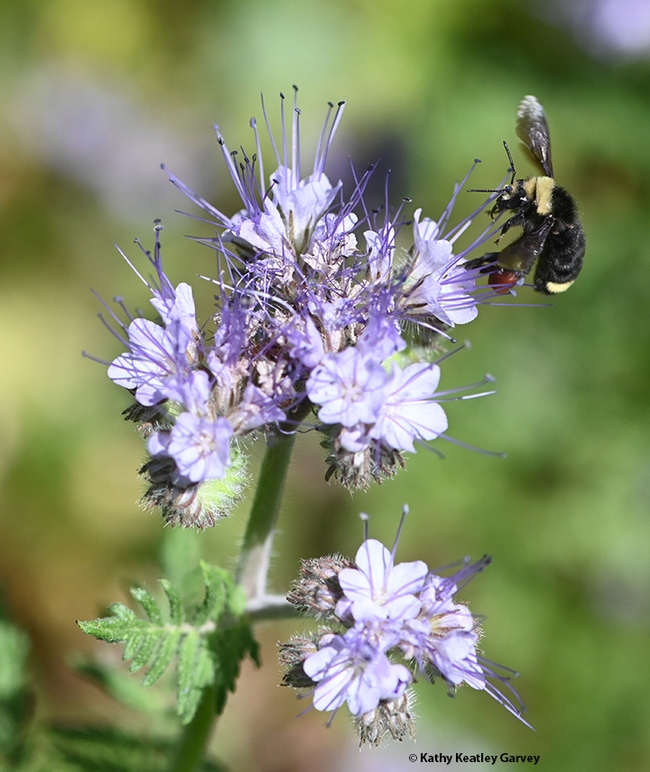
Buzzing and never missing a beat, this bumble bee is a study in movement. (Photo by Kathy Keatley Garvey)
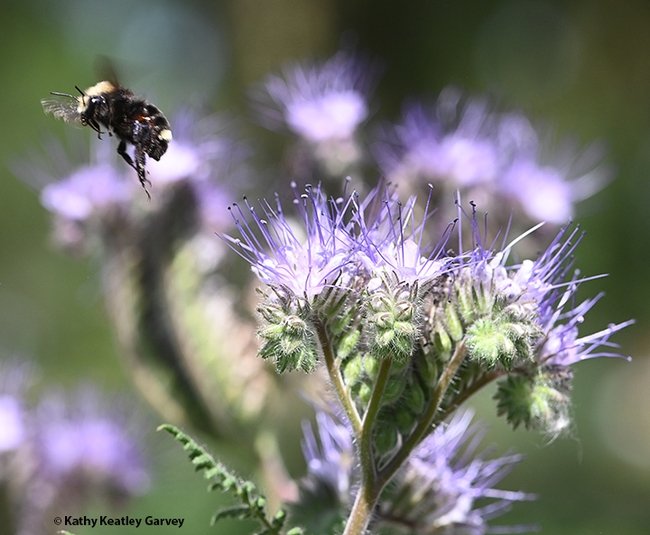
A bumble bee ballet ends where another one begins. (Photo by Kathy Keatley Garvey)
A Hidden Treasure at UC Davis Biodiversity Museum Day
Talk about those tenacious tidy tips. And those picture-perfect phacelias. When you attend the UC...
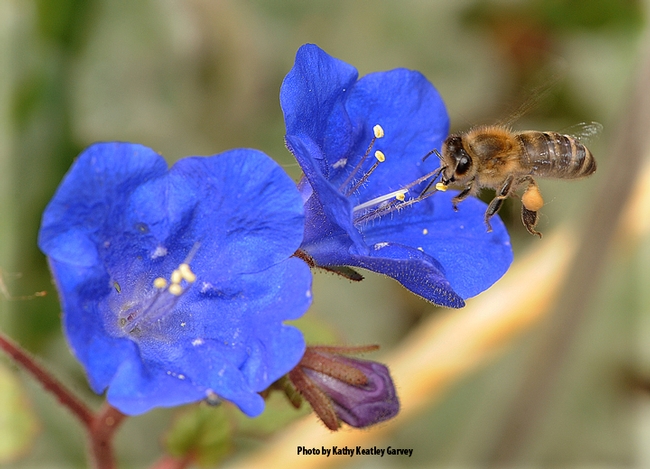
A honey bee foraging on a desert bell, Phacelia campanularia, an annual herb that is native to California. (Photo by Kathy Keatley Garvey)
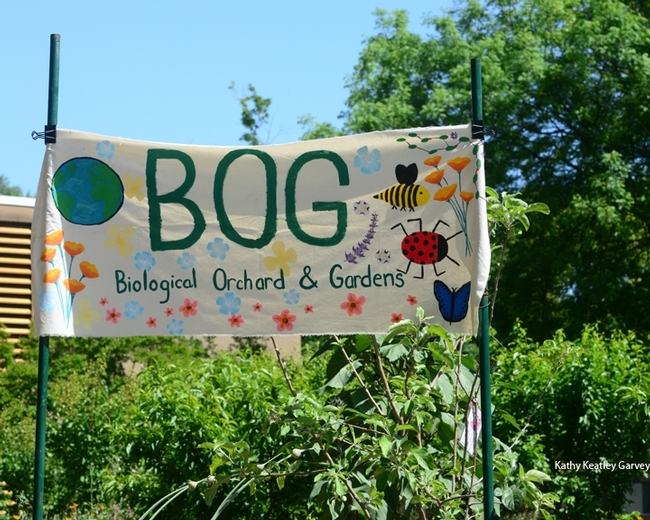
A sign defines the Biological Orchard and Gardens (BOG). (Photo by Kathy Keatley Garvey)
Bumble Bees: Pollen Power in the Phacelia
Talk about pollen! The bumble bees, Bombus vandykei (as identified by Robbin Thorp, distinguished...
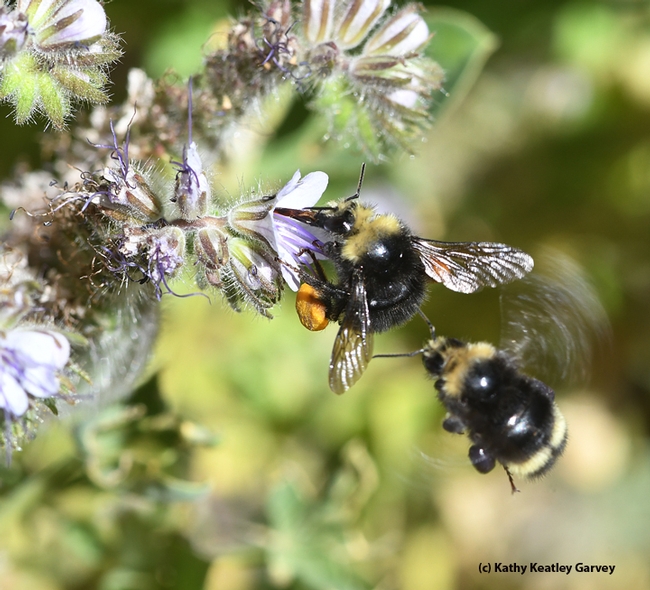
It's mine--move away! Two bumble bees, species Bombus vandykei, seek the same Phacelia blossom on the UC Davis central campus. (Photo by Kathy Keatley Garvey)
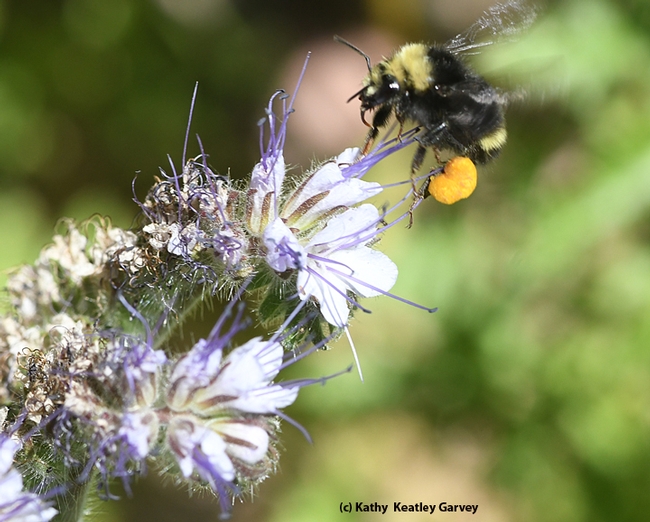
Check out the heavy load of pollen on this bumble bee, Bombus vandykei. (Photo by Kathy Keatley Garvey)
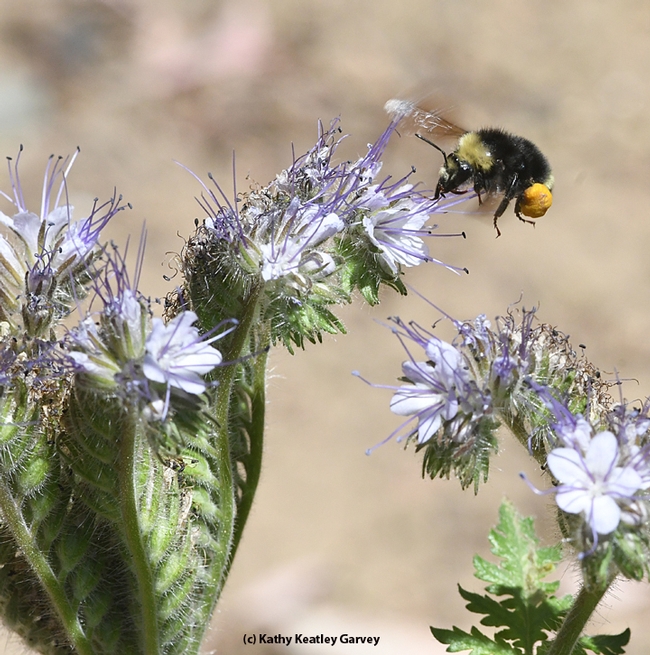
The Phacelia is a plant that native bees, including this native bumble bee, Bombus vandykei, love. (Photo by Kathy Keatley Garvey)
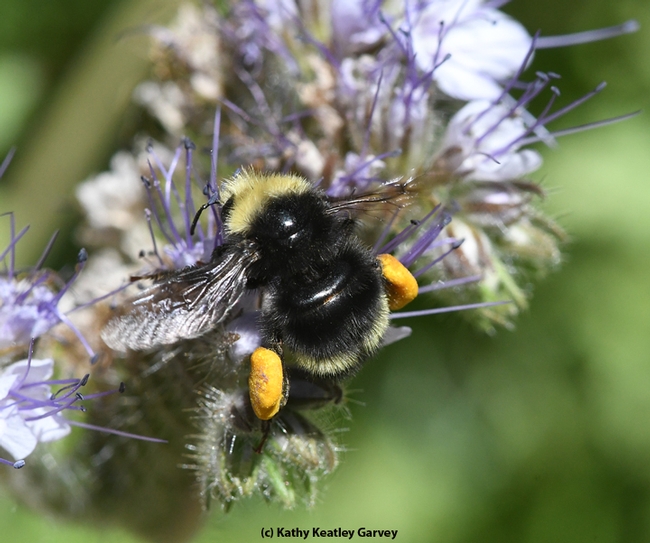
Saddle bags of pure gold? No, golden pollen carried by the Bombus vandykei. (Photo by Kathy Keatley Garvey)
Going Native
The first thing you notice when you walk up to the Harry H. Laidlaw Jr. Honey Bee Research Facility...
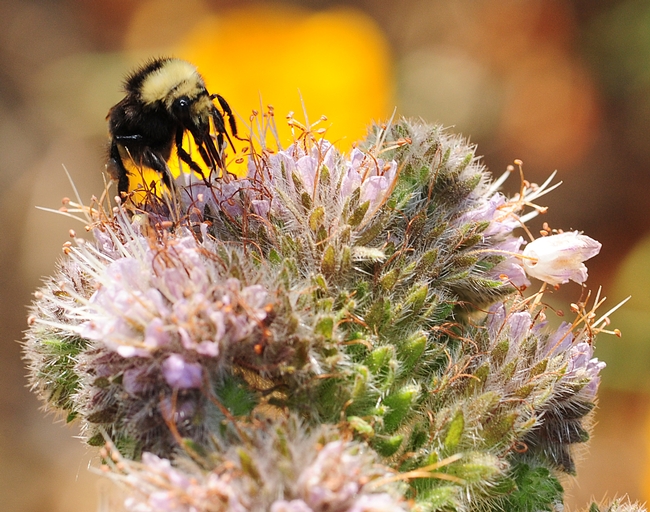
Bumble bee, Bombus vandykei, foraging on phacelia. (Photo by Kathy Keatley Garvey)

Side view of bumble bee, Bombus vandykei. (Photo by Kathy Keatley Garvey)

Competition for the phacelia! (Photo by Kathy Keatley Garvey)
The best of the best
When you drive around Yolo County farmlands, you may see them: a colorful mix of native forbs meant to attract bees and other beneficial insects.
What's a forb? A forb is a broad-leaved herb (as opposed to grass) that commonly grows in a field, prairie, or meadow or alongside farmland.
What's the best mix of native forbs?
Native pollinator specialist Neal Williams, assistant professor of entomology at the University of California, Davis, and research associate Kimiora Ward are researching which native forbs perform the best.
So far, the plants that have performed the best in their Yolo County trials are:
- Phacelia tanacetifolia,known by its common name, lacy phacelia
- Eschscholzia californica, California golden poppy, the state flower
- Lupinus densiflorus, golden lupine
- Lupinus succulentus, hollowleaf annual lupine or arroyo lupine
- Lupinus formosus, summer or western lupine
- Phacelia californica, California phacelia or rock phacelia
- Trichostema lanceolatum, vinegar weed
- Grindelia camporum, Great Valley gumplant
- Helianthus bolanderi, Bolander's sunflower
Take the lacy phacelia. You often see it planted along crop fields where it is known as a good bee plant. It attracts beneficial insects such a honey bees and syrphid flies (aka hover flies), adding a double bonus to the farmer's land. The syrphid fly is a good biological pest; in its larval stage, it gobbles aphids.
The UC Davis researchers' grant, "'Development and Validation of Protocols for Assessing Functioning of Pollinator Habitat Plantings for Agricultural Settings," is funded by the U.S. Department of Agriculture and is aimed at improving pollinator habitat plantings.
This research should prove invaluable.
As Williams said: "Recent declines in honey bee populations and the threat of losses in pollination service to economically important crops has raised awareness of the importance of restoring and conserving native bee diversity and abundance."
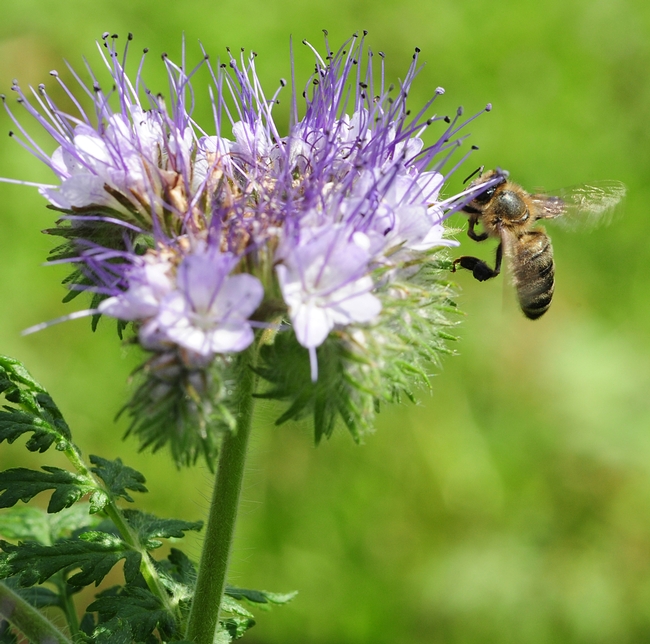
Honey bee heading toward lacy phacelia. (Photo by Kathy Keatley Garvey)
